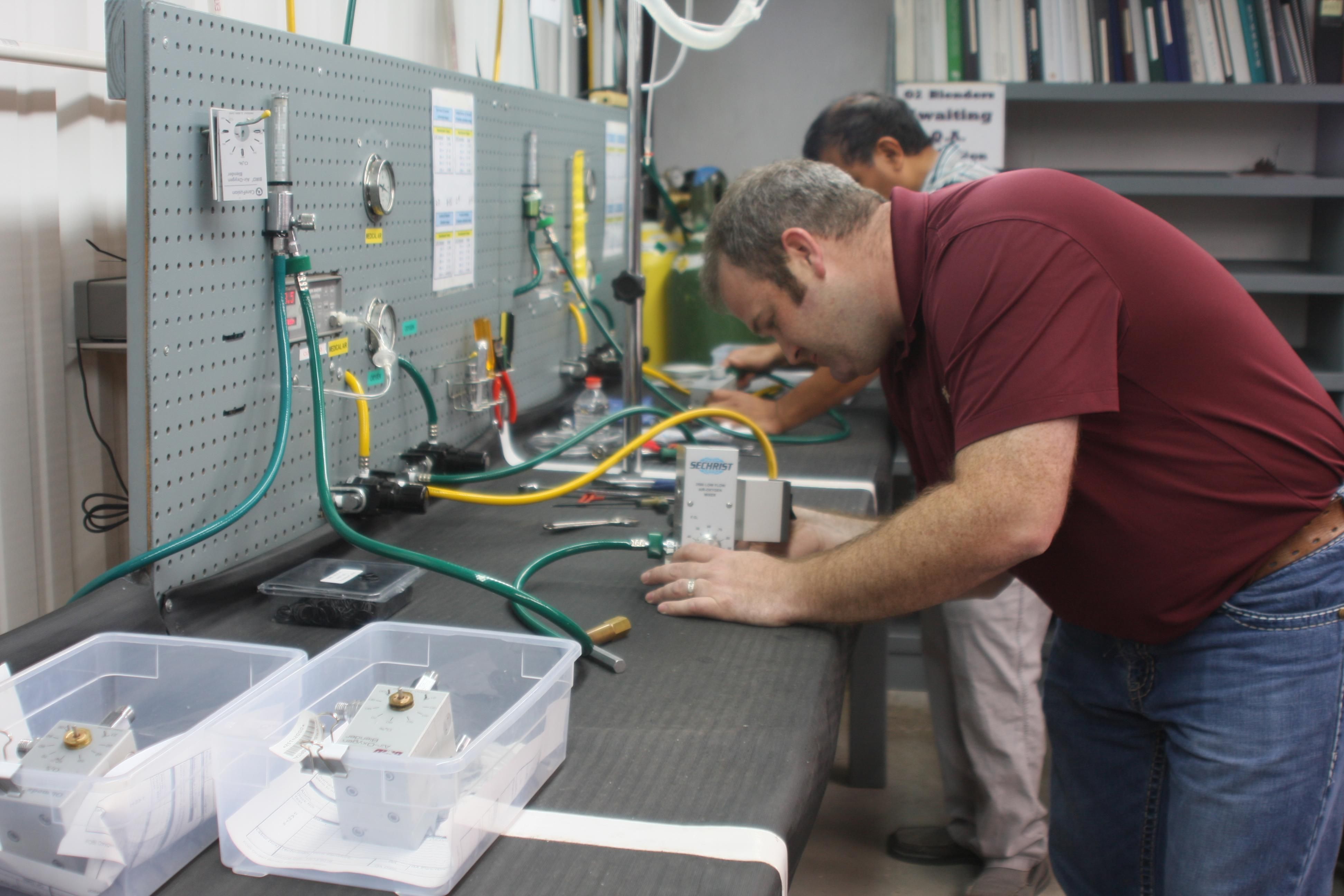
PM Tips for Your Blenders
Learn more about doing preventative maintenance with blenders including safety tips and common issues.
Thu Jul 26 2018
We spoke with Patrick Przbyla, VP of FOBI Medical for tips and tricks for doing preventative maintenance on blenders.
How often should you preform preventative maintenance on a Blenders?
Every blender manufacturer’s literature states that a complete overhaul is required every two years. According to the FDA, oxygen-air blenders are classified as a Class 2 Device. A blender is also considered a medication delivery system used to deliver different concentrations of oxygen to a patient. It is important to note that there have been blender failures, reported through MAUDE to the FDA, in which patients have been negatively impacted by a blender failure.
What do you need to have with you when doing preventative maintenance?
To a degree the tools differ by blender type. In fact, each manufacturer has a “special” tool or tools designed for the removal of certain parts on their respective blenders. Also, a technician must have a blender overhaul parts kit, the capability of ultrasonically cleaning and rinsing the blender components, special lubricants for the O-rings, medical air and oxygen sources and an accurate device to properly calibrate the blender. Of course a designated workspace and qualified technician go without saying! At FOBI Medical our technicians are certified at the manufacturer’s school to ensure the proper procedures are followed when the blenders are serviced. By virtue of overhauling thousands of blenders our technicians have honed the process and become extremely efficient at performing overhauls on any make or model of blender. This experience gives them the ability to quickly diagnose any problems and correct them on the spot.
Are there certain parts of blenders that typically wear out the fastest or require extra attention?
Oxygen-air blenders are sturdy devices. The largest components are machined aluminum blocks which rarely wear out. The O-rings are, however, are a different story. During disassembly, our technicians routinely find O-rings that are severely dried, cracked, or sometimes missing all together. This issue is usually caused by improper lubrication of the O-rings when they are installed -- a situation that can lead to excessive wear and premature failure. The alarm assembly is another area of concern. On a blender, the alarm sounds when there is a pre-set pressure differential between the air and oxygen sources. Again, it is not uncommon for us to receive blenders with medical tape over the alarm holes or the alarm removed completely. As you can imaging, silencing the alarm not conducive to having a properly functioning device. In many cases, the alarm sounding is an indication of the blender requiring service.
What are common problems encountered when doing a preventative maintenance?
A Blender utilizes a large number of O-rings of different diameters and thicknesses. As mentioned above, these O-rings require special care during assembly and even a small flaw in an O-ring can cause the blender to fail calibration. Diaphragms can also contribute to problems during the overhaul. The area on the blender “block” where the diaphragm is positioned is precision machined to ensure the diaphragm seats properly and the blender operates correctly. It is here in the overhaul process that the technician usually needs an OEM proprietary tool to assure proper placement.
If an equipment has not been serviced in a while, what issues might you encounter when doing the PM?
The two most common issues our technicians experience from improperly maintained blenders are failing O-rings and cracked diaphragms. Obviously either can create issues with blender performance but they can also negatively affect the patient. In most cases, the blended air and oxygen are not filtered to the patient which means any debris from disintegrating parts can potentially flow into the patient’s lungs. On blenders that have not been properly maintained we sometimes find contamination as well. Typically this is due to water making its way into the blender “blocks” or from some form of contaminant in the hospital’s air system entering the blender.
Are there any other tips you have for doing PM on a blender?
Blenders are not complicated electronic devices, quite the opposite; a blender is a mechanical device. That being said, to overhaul a blender can take an experienced technician over two hours. An inexperienced technician, whose concentration is interrupted by a service call or who has difficulty calibrating the device can easily spend two or three times that! The most important items to consider when servicing oxygen-air blenders are -first and foremost -- to be properly trained. Second, verify one has the correct tools and a high quality calibration device for performing the overhaul. And, lastly, ensure there is ample ‘free’ bench space and an uninterrupted block of time.
Learn more about FOBI Medical here.
